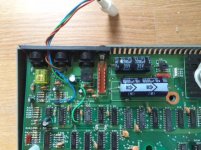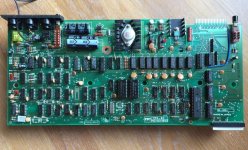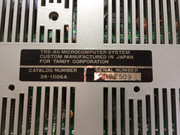dutchacorn
Experienced Member
Hi!
I'm Paul from the Netherlands and my retro-madness started when I bought an attic full of eighties Acorn hardware & software. That's also when I first discovered retro forums - hence the user name.
In my forties now, I grew up with the British computers (Sinclair and Acorn) in the eighties. Also some C64 memories. Young kids, an understanding wife (within reason) and a more and more cramped study.
In retro land I'm a jack-of-all-master-of-none type with a preference for hardware.
My older brother mentioned the Exidy Sorcerer which I managed to get (looking for a S-100 interface). And, treading into the pre-1980 CP/M computer era, this Monday I got a TRS-80 with expansion interface and drive but no display or connecting cables (still looking for cables). The TRS-80 works (except the LED :shock , the drive works, no idea about the expansion interface yet. Fixed up a video cable.
, the drive works, no idea about the expansion interface yet. Fixed up a video cable.
The previous owner fixed an extra DIN plug to the TRS-80.

Any ideas what it can be for? My initial thought was an RGB plug but for a B&W computer?
Many thanks,
Paul
I'm Paul from the Netherlands and my retro-madness started when I bought an attic full of eighties Acorn hardware & software. That's also when I first discovered retro forums - hence the user name.
In my forties now, I grew up with the British computers (Sinclair and Acorn) in the eighties. Also some C64 memories. Young kids, an understanding wife (within reason) and a more and more cramped study.
In retro land I'm a jack-of-all-master-of-none type with a preference for hardware.
My older brother mentioned the Exidy Sorcerer which I managed to get (looking for a S-100 interface). And, treading into the pre-1980 CP/M computer era, this Monday I got a TRS-80 with expansion interface and drive but no display or connecting cables (still looking for cables). The TRS-80 works (except the LED :shock
The previous owner fixed an extra DIN plug to the TRS-80.

Any ideas what it can be for? My initial thought was an RGB plug but for a B&W computer?
Many thanks,
Paul



